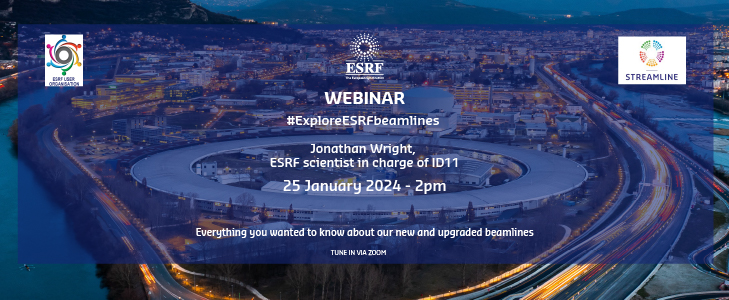EXPLORE ESRF BEAMLINES - ID11 Material Science Beamline: Diffraction and Imaging - Jonathan Wright ESRF scientist in charge of ID11

EVERYTHING YOU WANTED TO KNOW ABOUT OUR NEW & UPGRADED BEAMLINES
ID11 Material Science: Diffraction and Imaging
Jonathan Wright, ESRF Scientist in charge of ID11
ABSTRACT
The Materials Science beamline offers a suite of X-ray diffraction and imaging methods that can address a wide range of research questions in materials science. The beamline offers a high flux of high-energy X-rays, and there are three end-stations that are adapted for different beam sizes and samples. During the EBS upgrade, ID11 gained an order of magnitude in X-ray flux and it has been equipped with a suite of new detectors.
A nanoscope end-station can provide beam sizes down to 0.1 µm at 40-70 keV. This is now equipped with a photon counting CdTe Eiger2 4M pixel detector. The station enables fast (500 fps) scanning 3D-XRD-CT measurements. These experiments bridge the gap between traditional powder and single crystal diffraction methods, and can be used for amorphous samples as well as imaging grains in polycrystalline microstructures. Atomic structures can also be determined from very small crystallites using this station.
The 3DXRD station is optimised for beam sizes down to 1 µm and this has been upgraded with two new sCMOS detectors for phase- and diffraction- contrast tomography (PCT, DCT). Small load frames and furnaces, etc, can be used on this end-station. The combination of X-ray imaging and grain mapping via X-ray diffraction allow visitors to see microstructures evolving in their samples.
For larger sample environments, and experiments needing more space, the EH1 hutch offers an extremely high X-ray flux together with a fast CCD detector for in-situ X-ray diffraction and PDF experiments.
TO WATCH THE REPLAY OF THE WEBINAR, PLEASE CLICK ON THIS LINK



